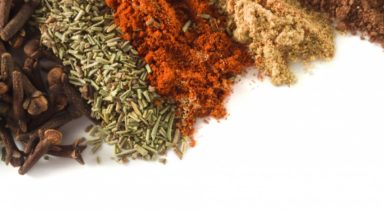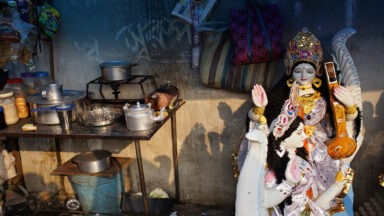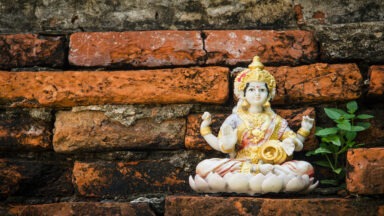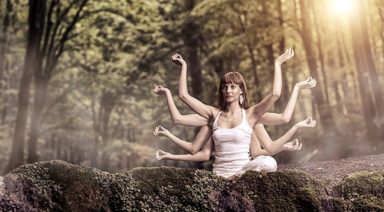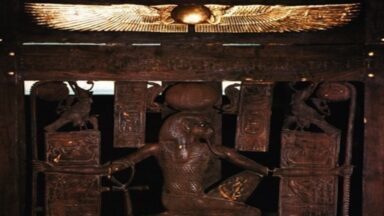The Perfect Cleanse for Yogis: Kitchari
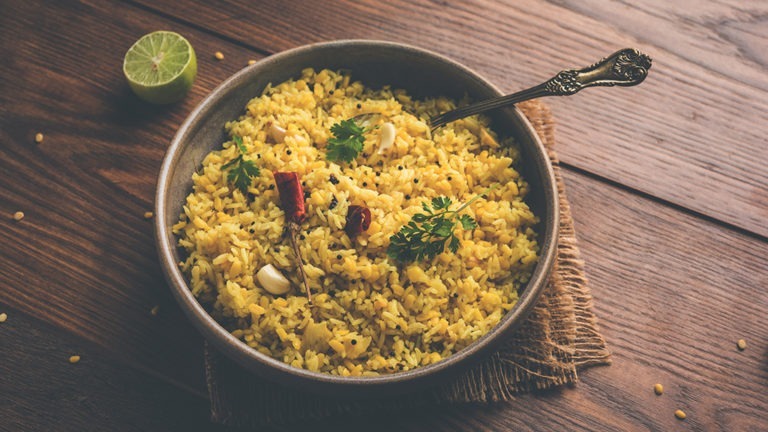
Ayurveda is the 5,000 year old sister science of yoga; it translates to “knowledge of life” in Sanskrit. Do you need a mental, physical or spiritual reset? Are you fatigued or feeling out of balance? Try this balancing Ayurvedic cleanse.
What is Kitchari (AKA Kichadi, Khichari or Kichari)?
This cleanse is based on a dish called kichadi or kitchari and cumin, coriander, fennel tea. Kitchari consists of split mung beans and basmati rice, with spices and herbs. It is balancing to the body, harmonious to mind and easy to digest. Try this cleanse for a day, week or even longer; just listen to your body. You can try this cleanse as the seasons change, but spring is a particularly powerful time to reset.

Tridoshic Kitchari Recipe
Ingredients
Half a medium onion finely diced
1 inch fresh peeled ginger, finely diced
1/4 teaspoon hing or asafoetida (reduces the gaseous nature of beans)
1 cup split mung dal
3/4 cup white basmati rice
1/2 bunch spinach (or other vegetables such as asparagus, zucchini, etc.)
1 1/2 teaspoon sea salt/rock salt
4 1/2 cups water (add more water for soup-like texture or less for a drier stew)
4 tablespoons ghee
1 teaspoon cumin seeds
1 teaspoon coriander seeds
1 teaspoon fennel seeds1/2 teaspoon ground cumin
Garnishes: parsley, lime, sesame seeds and/or cilantro
Instructions
Wash the dal and rice until the rinse water is clear; drain well. Heat the ghee on medium in a pan. Add the onions and ginger to sauté until tender. Add the cumin, fennel, coriander, and hing and sauté for 2 minutes. Add the dal and rice to the mixture. Sauté for a few more minutes and add the cold water. Cover and bring to a boil. Once boiling, stir, and lower the heat. Simmer on low until tender with the lid on (about 20 minutes). Meanwhile, wash and chop the vegetables. Add the greens to the top of the mixture and replace the cover. Allow to steam on top for 5-8 minutes. When done, add salt and stir. Garnish with a squeeze of lime, fresh cilantro or parsley, a dollop of ghee and toasted sesame seeds.
Cumin Coriander Fennel Tea
Take 2 teaspoons each of cumin, coriander and fennel. Add them to boiling water. Turn the heat down and let simmer for 10 minutes. Strain and sip warm tea throughout the day.
Other considerations: if you are going through a divorce, moving or changing jobs, try the gentle techniques of dinacharya, instead of a cleanse.
Ayurveda: Preparing Your Kitchen as a Ritual Space for Healing

At the change of each season I take a few hours to clean out and prepare my kitchen for the next season. I sort through anything that doesn’t seem fresh or healthy and move it out. I then spend time creating fresh spice mixtures, soup stocks and other staples. This practice is calming and creates space in my life for eating well.
In Ayurveda, a form of wellness that stems from ancient India, but has direct application to contemporary life, we often say that the most important ingredient in food is the consciousness of the chef. Compare, then, the consciousness imbued in food lovingly prepared in the home with food cooked under pressure by a stranger in a commercial kitchen.
The choice is clear: home-prepared food has the potential for more consciousness-value and can, therefore, transmit more radiant health. Even more so when the chef clears the space and their mind prior to cooking. When the kitchen is lovingly prepared to create scrumptious and delightful food, high-value healthy food will be the result.
What can we do to make food a partner in the creation of our radiant health?






